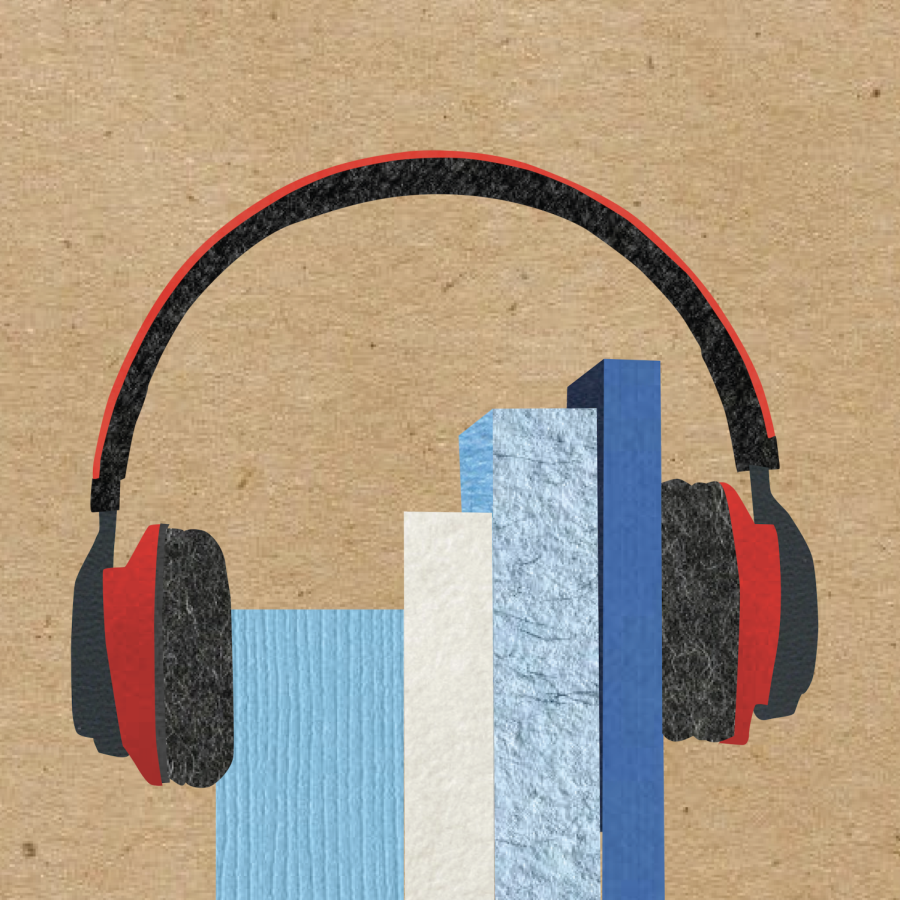How audiobooks have changed the literary landscape
December 1, 2022
From purchasing options on Audible to library-based apps like Overdrive, the digital world has adapted to audiobooks rather quickly over the last decade. Readers have begun to swap podcasts and music for narrated versions of literature of all kinds. Audiobooks provide a service that is unique from physical books: they allow the listener to multitask, something that has become increasingly necessary with our modern, busy lives.
Audiobooks have risen in popularity dramatically since they were first introduced and have become accessible with a few clicks on a smartphone. They have transformed the way in which books are consumed and created a more accessible, alternative avenue that modernizes literature.
“I just started listening to audiobooks this summer,” Tara Weber ’25, an avid reader, said. “I do like them because I can multitask while also listening to a novel which is very nice.”
Despite how well-known and easily-accessible audiobooks are today, they were not always this way; rather, they have grown in popularity significantly over the past 50 years. Audiobooks were first introduced in 1932 by the American Foundation for the Blind with the purpose of allowing blind people to experience literature. In 1933, the Library of Congress started recording audiobooks. However, these were limited to famous historical works or literary classics — things like Shakepearian plays or the American Constitution — and were not produced for the mass public. Major publishing houses were not yet involved with audiobook production; books, consequently confined to one medium, remained for the most part in the format they had been in for as long as they existed. When audiobooks began to rise in popularity, they became available on cassette tapes in the 1960s and on compact discs in the 1980s. Cassette tapes took up a lot of room; the Bible, for example, filled up an entire suitcase with cassette tapes. Here, listening to books seemed to be less convenient than reading them physically. Ironically, convenience would become one of the main draws of audiobooks in the future.
Now, the term “audiobook” is common, but it represents more than one would initially suspect. Audiobooks are an intersection between media production and print books, and, as a result, they have a connotation attached to them that is somewhat controversial. Audiobooks are accessible everywhere: on Kindles, through companies like Audible, on Alexas or Echoes or through apps like Overdrive or Libby. Warner Publishing, Penguin and Simon & Schuster all added audio-based imprints to their companies. In 2016, the Audio Publishers Association reported $2.1 billion in audiobook sales, which is proof of their growing popularity, especially when compared with the $1.8 billion in hardcover sales.
There is still, however, a conception that listening to books is not as beneficial or cannot be equated to physically reading; that audiobooks are cheating the printed page and do not count the same way a hardcover would. The audiobook industry has thus faced expectations that they must sell wildly successfully in order to combat this notion. Maria Snelling writes that these industries “have to not only create as much revenue as the print book but have to surpass the entertainment value of the print book in order to be valued.” This creates a complicated environment within which the audiobook exists: audiobooks become two conflicting things at once. They are a multi-faceted production that adds value and content to the traditional hardcover, but simultaneously, they are seen as inferior and less valid than the traditional hardcover. Consequently, audiobooks blur the lines between reading, viewing and consuming. They combine versions of media and modernize the traditional novel.
A large and diverse team of professionals contribute to the publication of the traditional print book, and audiobooks add another layer to both the creation of books and to the consumer experience. Voice acting, directing, sound engineering and musical accompaniment make up the end product. Audio teams are involved from the very beginning of acquisition; they determine how well the book would work as an audiobook and stay in constant communication with editors as the manuscript moves through the publishing process.
Narration requires the voice actor to take on multiple different voices and put the emotional significance into the text that a reader would do in their head whilst reading. In children’s literature, for example, narrators must be able to convey youthful and whimsical energy. Narration style also matters — this depends on the way the voice actor narrates the text. Most commonly in fiction, narrators give different voices to each of the characters, but sometimes only the main characters have unique voices, and sometimes books that change points of view have multiple voice actors. Sound elements like background music or supplemental sound effects establish mood, atmosphere and cultural significance. Once the text is recorded, it gets edited and audible, heavy breathing or page turning is removed. Finally, the audiobook goes to a Check Listener, which is like a proofreader for audiobooks.
Peter Bognanni, associate professor and chair of the English department at Macalester, thinks that the growing popularity of audiobooks is positive.
“I’ve been really interested in books that have done casts of different characters with different voices and turned them almost into radio plays and added music,” Bognanni said. “I’m really open minded about it, and I think anything that gets people to read more books or gets them excited about reading is a great development… I think the experience is a little different, but I don’t think that necessarily means it’s bad.”
Audiobooks require a different sort of attention from readers — while they may exceed entertainment and convenience value when compared to the physical book, they do not allow for the same level of intellectual engagement. In an interview with Time, Daniel Willingham, a professor of psychology at the University of Virginia, explains that listening to books leaves less room for interpretation because of inflection, tone and intonations. Still, he cites sarcasm as an example of something that is hard to communicate in print but easy to communicate through audio. Willingham explains that people have an easier time understanding Shakespeare when they hear it than when they read it. Thus, listeners are gaining a different sort of knowledge through engaging with audiobooks than they would when reading a physical book.
Naturally, we retain information differently when we listen to it, and studies have found that while people process books effectively through audio, they process them differently. In a study focusing on attention span in time-compressed audio, researchers found that there was little difference in one’s ability to effectively comprehend and remember information when listening to books rather than reading them. They also found a similar result when listening to books at the normal speed versus listening to books at one-and-a-half times speed. Attention and learning performance were relatively the same. However, there was a decrease in all three of these concepts when students listened to the audio at three times the speed. This idea returns to the difference in intellectual engagement between audiobooks and printbooks. The slower one listens to an audiobook, the more space they have to process and analyze the information. However, Tara Weber doesn’t always prefer them over print books.
“Sometimes I zone out more if I don’t have a text in front of me,” Weber said. “The slow pace is [also] difficult for me and I can’t listen to [it at a] fast pace like some people.”
Despite the high levels of information retention found with audiobooks, there is still a difference between listening and reading. Print books provide the reader with an anchor in the physical text and spatial cues — like where something was on a page or about how far into the book it was — that help the reader remember what they’ve read. Further, rereading and re-examining complicated texts is inherently easier in print books. While pausing is an option when listening, it requires more effort to return to the desired point in the text and re-listen. However, some research suggests that it may be possible to train yourself to listen more critically with increased practice, skills that are beneficial to daily life with regards to community engagement.
Audiobooks also give authors a different perspective on their own books. Bognanni laughed about how the narrator for the audiobook of his first novel mispronounced both his and his wife’s name in the first ten seconds. Still, he enjoyed the alternative format.
“I put [the audiobook] in my car’s CD player and drove around listening to my own book in a supreme act of narcissism for maybe about a half hour, and I ended up really liking it,” Bognanni said. “It was interesting to hear it spoken back to me.”
Ultimately, audiobooks are a new facet of the publishing industry that give readers an alternative option for reading books. They allow listeners to increase the number of books they read, although they may not be able to engage with the text to the full extent they would with a physical book. Either way, audiobooks expand on the print book and introduce an interesting audio-based element to literature.














